中国组织工程研究 ›› 2017, Vol. 21 ›› Issue (32): 5115-5121.doi: 10.3969/j.issn.2095-4344.2017.32.006
• 骨组织构建 bone tissue construction • 上一篇 下一篇
创伤性脑损伤合并骨折中加速骨折愈合过程中相关因子的表达
马乐园,赵 岩,乔万庆,朱 锋
- (新疆医科大学第一附属医院,新疆维吾尔自治区乌鲁木齐市 830054)
Related factors accelerate fracture healing in traumatic brain injury combined with fracture
Ma Le-yuan, Zhao Yan, Qiao Wan-qing, Zhu Feng
- (First Affiliated Hospital of Xinjiang Medical University, Urumqi 830054, Xinjiang Uygur Autonomous Region, China)
摘要:
文章快速阅读:
.jpg) 文题释义:
降钙素:是甲状腺的滤泡旁细胞(明亮细胞或C细胞)产生和分泌,主要生理功能是降低血钙、血磷的水平。
胰岛素样生长因子:是一类多功能细胞增殖调控因子,在细胞的分化、增殖、个体的生长发育中具有重要的促进作用。
文题释义:
降钙素:是甲状腺的滤泡旁细胞(明亮细胞或C细胞)产生和分泌,主要生理功能是降低血钙、血磷的水平。
胰岛素样生长因子:是一类多功能细胞增殖调控因子,在细胞的分化、增殖、个体的生长发育中具有重要的促进作用。
.jpg) 文题释义:
降钙素:是甲状腺的滤泡旁细胞(明亮细胞或C细胞)产生和分泌,主要生理功能是降低血钙、血磷的水平。
胰岛素样生长因子:是一类多功能细胞增殖调控因子,在细胞的分化、增殖、个体的生长发育中具有重要的促进作用。
文题释义:
降钙素:是甲状腺的滤泡旁细胞(明亮细胞或C细胞)产生和分泌,主要生理功能是降低血钙、血磷的水平。
胰岛素样生长因子:是一类多功能细胞增殖调控因子,在细胞的分化、增殖、个体的生长发育中具有重要的促进作用。摘要
背景:颅脑损伤能促进骨折愈合的现象,近年逐渐成为热点话题,但其发生机制还不明确。
目的:建立颅脑损伤合并右侧胫骨骨折兔模型,观察血清及脑脊液降钙素基因相关肽及神经生长因子及胰岛素样生长因子1在骨折愈合中的变化趋势。
方法:将新西兰大白兔随机分为4组,对照组、单纯颅脑创伤组、单纯骨折组及颅脑创伤合并骨折组,后3组分别建立颅脑损伤模型、右侧胫骨骨折模型及颅脑损伤合并右侧胫骨骨折模型,对照组为正常新西兰大白兔。建模后检测各组不同时间脑脊液、血清中的3种因子表达水平。对于骨折组及颅脑创伤合并骨折组分别建模后1,4,8周麻醉处死,取骨全长拍X射线片,测量骨痂体积并进行病理分析。
结果与结论:颅脑创伤合并骨折组骨折愈合速度比单纯骨折组快;建模后4周颅脑创伤合并骨折组骨痂体积、骨小梁宽度、骨小梁面积比、新生血管数量明显高于单纯骨折组(P < 0.05);颅脑创伤合并骨折组血清及脑脊液中3种因子较单纯骨折组明显升高(P < 0.05),且3种因子于脑脊液中达峰时间较血清明显提前。在颅脑创伤合并骨折组中3种因子相比,其中降钙素基因相关肽升高时间较神经生长因子、胰岛素样生长因子1早。结果证实,在颅脑损伤后促进骨折愈合过程中,降钙素基因相关肽、神经生长因子及胰岛素样生长因子1是促进骨折愈合的相关因素,其中降钙素基因相关肽促进骨折愈合的速度最快。
中国组织工程研究杂志出版内容重点:组织构建;骨细胞;软骨细胞;细胞培养;成纤维细胞;血管内皮细胞;骨质疏松;组织工程
ORCID: 0000-0003-1091-0705(马乐园)
中图分类号:
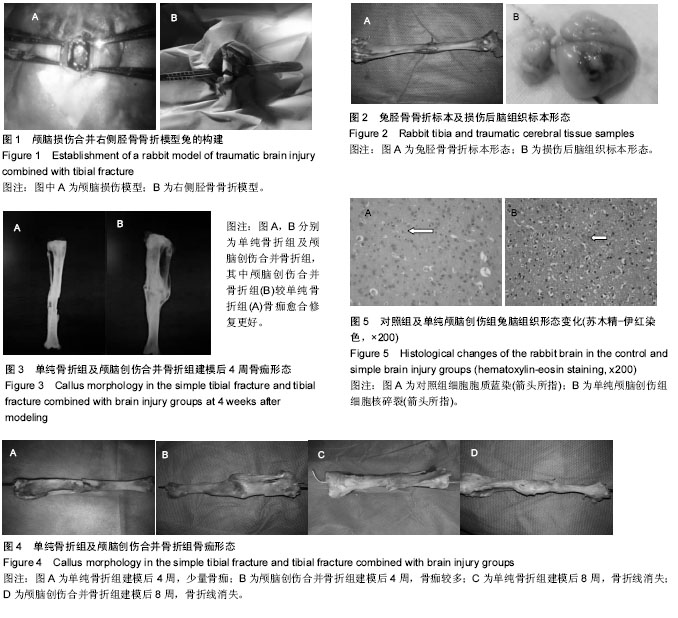
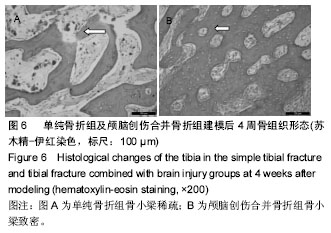
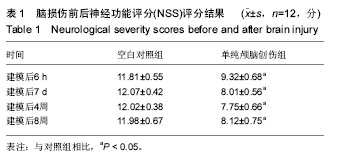
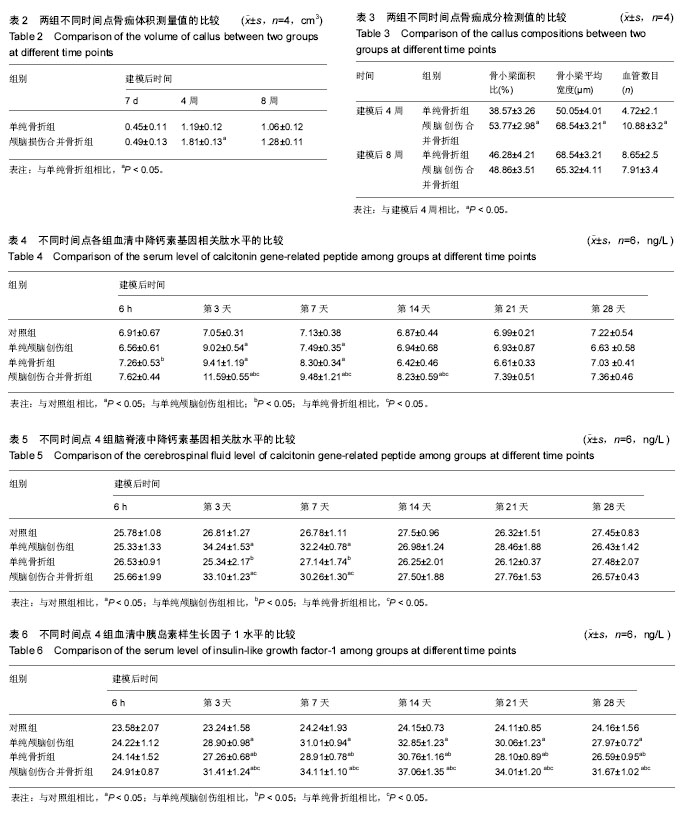
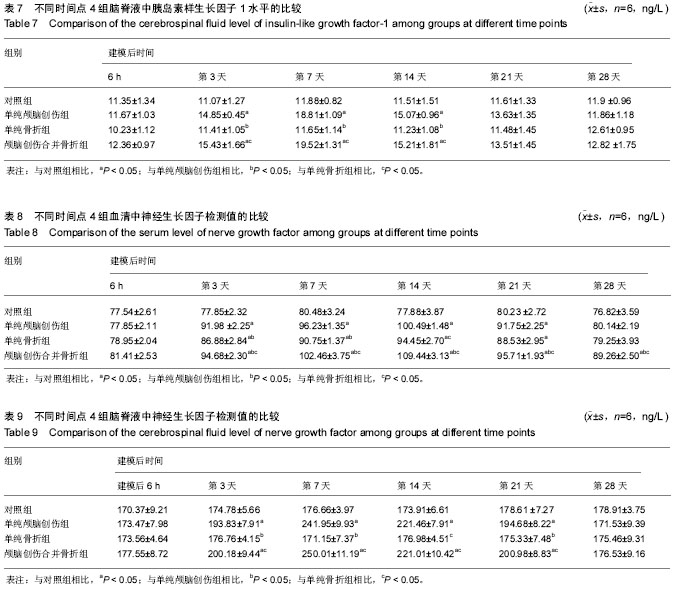
.jpg) 文题释义:
降钙素:是甲状腺的滤泡旁细胞(明亮细胞或C细胞)产生和分泌,主要生理功能是降低血钙、血磷的水平。
胰岛素样生长因子:是一类多功能细胞增殖调控因子,在细胞的分化、增殖、个体的生长发育中具有重要的促进作用。
文题释义:
降钙素:是甲状腺的滤泡旁细胞(明亮细胞或C细胞)产生和分泌,主要生理功能是降低血钙、血磷的水平。
胰岛素样生长因子:是一类多功能细胞增殖调控因子,在细胞的分化、增殖、个体的生长发育中具有重要的促进作用。